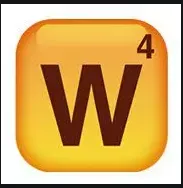Your buddies are begging you to play, but you don’t know the first thing about the laws of Words For Friends. Not to think about it. It’s easy to learn how to play Words With Friends when you start with the basics. At the heart of the game is to take letter tiles, rearrange them into words, and score more points than your rival. You’re bound to get addicted once you start playing!
Words with Friends is well-known for its success as a word game. But many players don’t know that Words with Friends is also a strategy game. Winning Words with Friends includes optimizing the use of bonus multipliers, as well as careful preparation to hold tiles that allow you to score consistently. Some Terms with Friends strategy that can help players to better their game:

The key aspects of the game you need to talk about are:
The game board: there are 225 spaces on the grid of 15 x 15. Play letter tiles horizontally or vertically to render words.
Letter rack: With each turn, you keep seven letter tiles on your rack. For eg, when you play three letter tiles in a turn, you’ll automatically get three new letter tiles from the tile bag for your next turn.
Tile Sack: The game has a total of 104 letter tiles. Each player starts with seven, loading the rack out of the bag until it’s empty.
The game stops when the tile bag is empty and one player uses all their letters. The game can even end when the players “pass” three times in a row.
Moves in Words With Colleagues
The aim of Words With Friends is to shape words that use letters in your letter rack, plus letters that are already on the game board. Words must be at least two letters long.
The first word played must include the center space, labelled with the “plus” symbol. This first term has a double-word ranking.
After that, any word must be linked to at least one of the letters already on the board.
Words with Friends Rules
The rules for Words With Friends score are exactly the same as they are for Scrabble.
Values of the letter
Every letter in Words With Friends has a point value assigned to it. Popular characters, such as T and E, are worth less points. More difficult letters, such as X and Q, are worth more points. The value of the point is seen on the tile itself.
Take, for example, the word CARD. Adding the tile values will be worth 8 points.
Uh, C (4 points)
A (1 point)
R: R (1 point)
D. D (2 points)
Bonus space
In addition to the face value of the letter tiles, you can gain more points by playing bonus space terms. Four styles of Words With Friends bonus room.
DL (double letter): doubles the size of the single letter tile.
TL (triple letter): triple the value of the single letter tile.
DW (double word): doubles the score for the whole word.
TW (Triple Word): triples the score to the whole word.
You will combine bonus space for even more points. Using the same CARD example, if the C is in the TL space and the D is in the TW space, you can measure the score as follows:
C (4 x 3 = 12 points)
A (1 point)
R: R (1 point)
Bingo bonus
If you play all seven tiles on your letter rack in one turn, you receive an additional 35 points. This is on top of any extra bonus space points you receive.
Multiple words
One of the most precious Words With Friends rules to remember is that you get credit for every word you make. If, for example, in forming a word horizontally, tiles also shape another word vertically, you get points for both words. Using hooks is one of the most effective tactics to succeed.
For eg, say that CARD is already a horizontal word on the board. You add the “S” at the end of it, plus-UNNY below the S. You’re winning points from both CARDS and SUNNY.
CARDS (4 + 1 + 2 + 1) = 9 points
SUNNY (1 + 2 + 2 + 3) = 10 points
9 + 10 = 19 points
If the “S” tile happens to be in DW space, both CARDS and SUNNY will receive a double word bonus.
CARDS (9 x 2) = 18 points
SUNNY (10 x 2) = 20 points
18 + 20 = 38 points
The Final Movement
The game stops when one player uses all their letter tiles and there are no more letters remaining in the tile bag. At that time, you add the value of all the letters left on the rack of the second player. This value is deducted from the score of the second player and added to the score of the first player. The winner is the player with the highest final score.
Power-ups and other movements
Beyond the main gameplay, you can further boost your odds of winning by using one of four power-ups. You can make these power-ups by playing, or you can buy them in the game. Words With Friends Power-ups are similar to those in Scrabble GO, but they are different as well.
Hindsight: Use after a transfer to see what better term you might play instead.
Word Radar: Show the spaces on the board where you can play a word.
Swap+: Swap letter tiles without missing a turn.
Word Clue: Indicates a particular location where you can play a high-scoring word.
Although you have a limited number of power-ups, you can use all of these four options at any time. They’re a frequent part of the game.
Shuffle: rearrange the letter tiles in a random order on your shelf (do not lose a turn).
Swap: swap one or more letter tiles for new ones in the tile bag (lose a turn).
Pass: Please miss your turn and let your opponent play their turn.
Resign: Voluntarily forfeit the game.
Now that you know the fundamentals of the rules of Words With Friends, you’re able to launch yourself into the ring and challenge your friends to a game.




